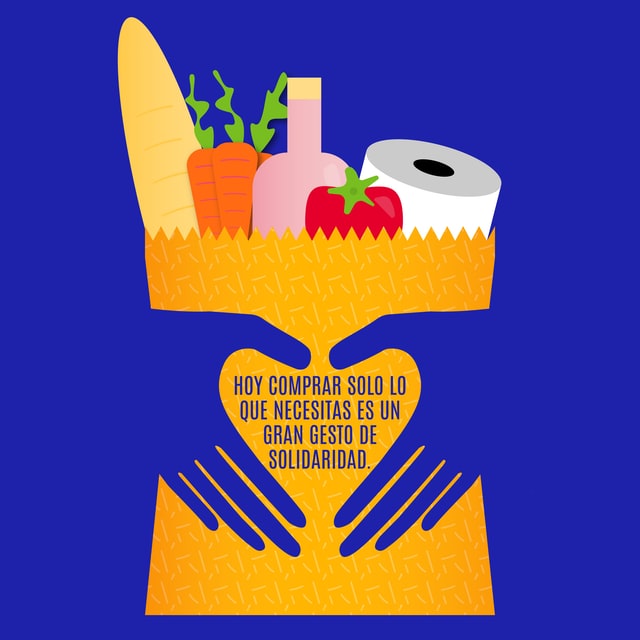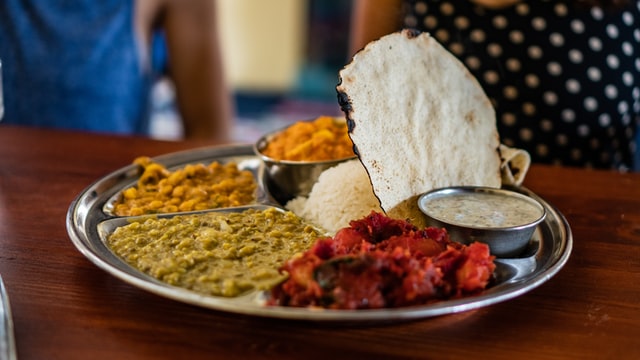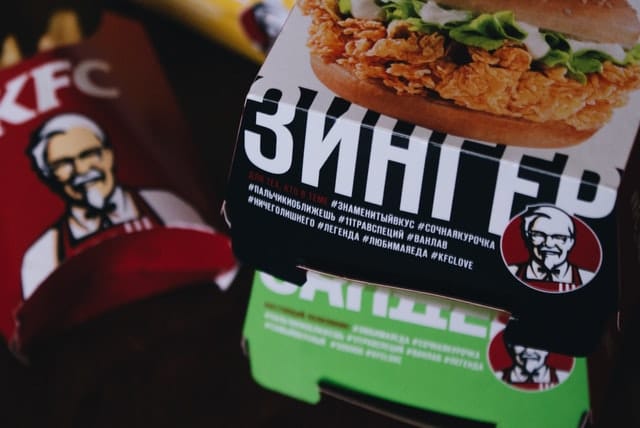Table of Contents
Food is an essential commodity. But the food industry throws up new brands at regular intervals. While some fail from the word go, others survive to build a strong image for themselves. Then there are giant brands such as McDonald’s, Coca Cola. However, branding is a continuous process and giant brands tweak their strategies from time to time to remain relevant. Astro strategist Hirav Shah has a 7- step approach for branding and rebranding for his clients
Branding
A term that defines the uniqueness of a product or business. Branding creates a product or business’ identity and makes sure it is entrenched in the minds of customers. Of course, smaller businesses do not go gung-ho about branding, though they do it in their own way. It sets them apart from their competitors.
However, when one speaks of market leaders, the big brands, it is a totally different ball game altogether. Brands spend millions of dollars to retain their brand identity and to continue instilling the values that go with their name.
Branding is the process of creating a strong, positive perception of an organisation, its products or services in customers’ minds by combining such elements as logo, design, mission statement and a consistent theme throughout all marketing communications. Today, products or services are identified by brand names and logos, thanks to the belligerent marketing and advertising strategies of brands. Let’s take the example of Xerox. Photocopying is today synonymous with the term Xerox, which incidentally happens to be a brand name.
Similarly, in the food industry, there are multiple products that are popular through their brand names. The list is exhaustive. You have KFC, McDonald’s, Lays, Mars, Starbucks, Pepsi, Coca Cola, and the list goes on and on.
These brands have been in the market for decades and despite all the ups and downs through the years, continue to rule the food industry. A brand that is established continues to have an emotional connect with the customers and they return for the product time and again.
In almost all parts of the world, the M of McDonald’s is an immediate draw to all those who want to have comfort food in the form of burgers and their French fries. In fact, there is a story that McDonald’s spends a lot of moolah on the amount of salt that needs to be put in their French fries to keep their customers tied to their brand.
Similarly, KFC, the Kentucky Fried Chicken brand maintains that while many can come close to its recipe, no one can replicate its recipe as it is a trade secret. Coca Cola has a similar stand. They claim time and again that their brand’s success is thanks to a well-kept secret.
Let’s check out brand benefits in the food industry
Effective branding is all about getting greater bargaining power. If one has a strong brand name, then they have more leverage in the market and it means more sales, based on their reputation.
■ Get your story right: Before you do anything, first figure out why you are launching a food brand. Obviously, you want to fill a gap in the market or to make a better product than the ones that already exist. Let’s take the example of Kentucky Fried Chicken. It is an American fast food chain headquartered in Louisville, Kentucky, that specialises in fried chicken. It is the second largest restaurant chain after McDonald’s, with a footprint in 150 countries.
The interesting story is that Colonel Sanders sold fried chicken from his roadside restaurant in Corbin, Kentucky during the Great Depression. However, Sanders identified the potential of the restaurant franchising concept and opened the first outlet in Utah. Eventually, the fried chicken gave stiff competition to hamburgers. By branding himself as Colonel Sanders, Harland became a prominent figure of American cultural history and his image is used in KFC advertising to this day. For the uninitiated, Pizza Hut and Taco Bell are sister concerns of KFC.
■ Do your homework: Research and surveys are very important for a brand to establish itself in the initial stages. During the product development stage, various branding concepts are used and the most popular one is finalised. However, it is crucial that the research carried out is conducted properly and objectively.
■ Name matters: Once again bigger brands spend millions on finalising on the name of a product. Once again, let’s talk of McD and KFC, names that have stood the test of times. Pizza Hut sounds like a simple name, but there is a lot of thinking and planning that goes into making a name popular. It has to be simple and easy for the customers to associate with. Menus might change, individual products might be different depending on customer tastes, but the umbrella name of the brand sells the product finally.
■ Packaging: Packaging is of primary importance for food products. Once again a lot of money is spent on research as the products need to draw customers and be taken off shelves. Just like names, various options are considered before the final packaged product hits the market. This holds good for start-ups too, who have to come up with innovative and creative options.
■ Decide on self-shout: It’s important to decide on the message a brand wants to put across to its customers and retailers. Let’s take the example of Taj Mahal Tea. It has a simple catch-line Wah Taj! which is short, sweet and simple. One has to decide if one wants to focus on flavour, health benefits or its association with some sort of social movement.
It’s not just customers, but the retailers have to be impressed and the investors who finance it have to be equally enticed.
Having said that, the best brands evolve over time. Managing a brand is a job that never ends. Once a brand becomes popular, the next step is to keep it fresh in the minds of people. Here, we have to mention Coca Cola and McDonald’s once again as they constantly tweak their brand to make sure they remain relevant. A recent example is that of KFC. Their tagline ‘finger licking good’ was changed during corona times to match the sentiments of people.
Different people view a brand differently and expert advice helps a brand to cater to such different groups. There must be an ongoing cycle of monitoring the brand’s performance, reviewing what is working and what isn’t and then making the necessary adjustments.
Let’s assume you are a well-established and world renowned brand. Or you could be a wobbly start-up, but astro strategist Hirav Shah has a holistic plan of action for your branding and rebranding:
For good business growth, astro strategist Hirav Shah maintains that it is important to have the necessary ‘luck’ in the personal chart of an individual. However, apart from that, there are a variety of factors that push forth ‘luck’ in business. The name of the business, it’s logo, the partner’s luck, etc, all determine the success of a business.
His point is whatever hard work one puts in or whatever talents one uses to put in smart work by strategizing and implementing those strategies in terms of advertising, marketing, sales, HR, production or service… things have to move smoothly and seamlessly.
According to astro strategist Hirav Shah, that is called the ‘luck’ of the company. So, if the structure of the company or organisation is proper, it helps in utilizing your potential and growth in a productive and positive manner, shares Hirav Shah.
Just consider
How does food taste without salt?
How does a movie work with a weak script?
How does one feel wearing ill-fitting clothes?
How does a track & field athlete feel if the track has a bad surface?
Similarly, in business, if the structure of the organization is great (ie, business name, great partners, correct registered and administrative address, logo, web-print-digital presence, brand name, etc), by seeking the help of an astro strategist, then a business can make and execute decisions within a perfectly timed framework to maximise success.
Here are the 7 factors that he considers before giving a road map for future branding
1) Name of the organisation: Don’t go by Shakespeare’s famous line – What’s in a name? On the contrary, when it comes to branding, it’s all in the name. Astro strategist Hirav Shah will help you name your organisation or brand or product in sync with numerological and astrological calculations.
2) Correct partners: Checking the compatibility, strengths and weaknesses of all partners and administrators.
3) Percentage of shares of all partners: Hirav Shah ensures that each partner share should be correctly balanced, so there are no disputes or disagreements at a later stage.
4) Registered address and administrative address: They should be astrologically compatible with the name of the organization and key people of the company.
5) Logo of the organisation: We have already seen how important the logo of a company is in the case of KFC, McDonald’s or Coca Cola. He helps you create and finalize the right logo that reflects your values and attracts the right kind of energy.
6) Web, print and digital presence: In today’s world, where one needs to be seen and heard on various media platforms, Hirav Shah ensures that your digital, print and marketing collaterals are aligned and in harmony with your brand’s purpose and vision.
7) Brand: Last, but surely not the least, astro strategist Hirav Shah makes sure that your brand assets are auspicious for the company and have a positive impact on team morale.


































